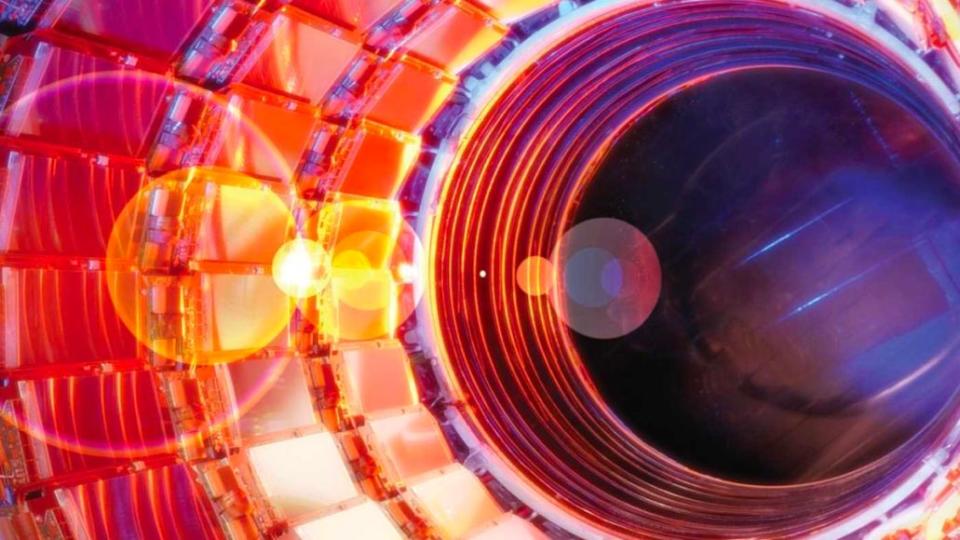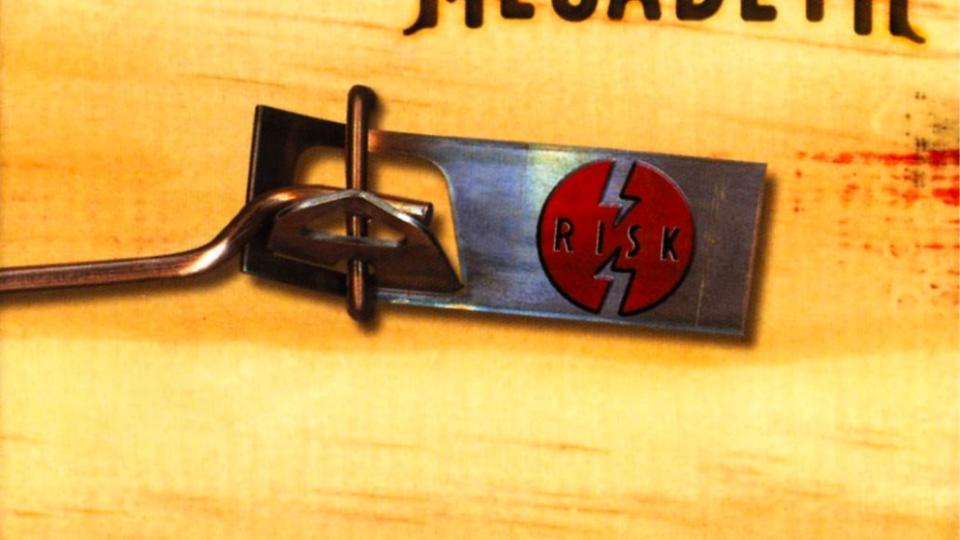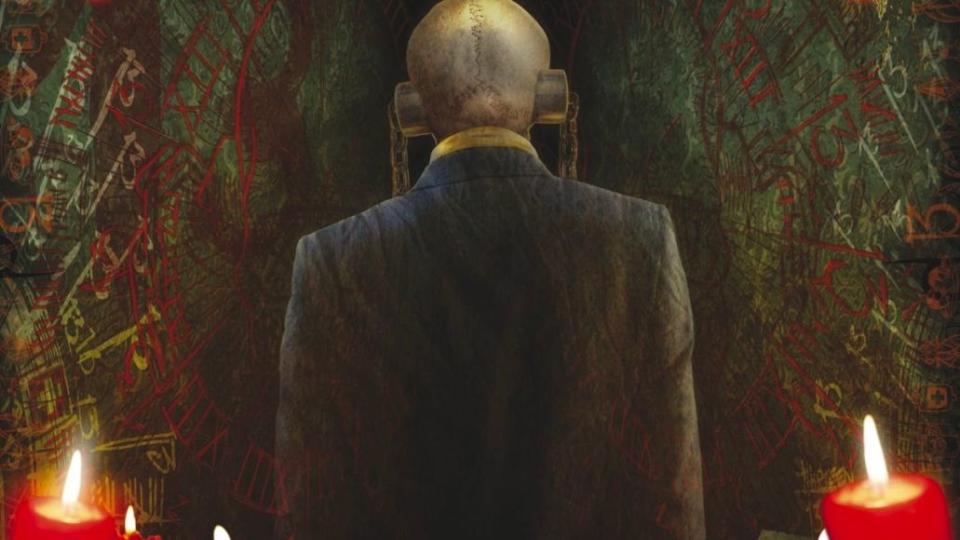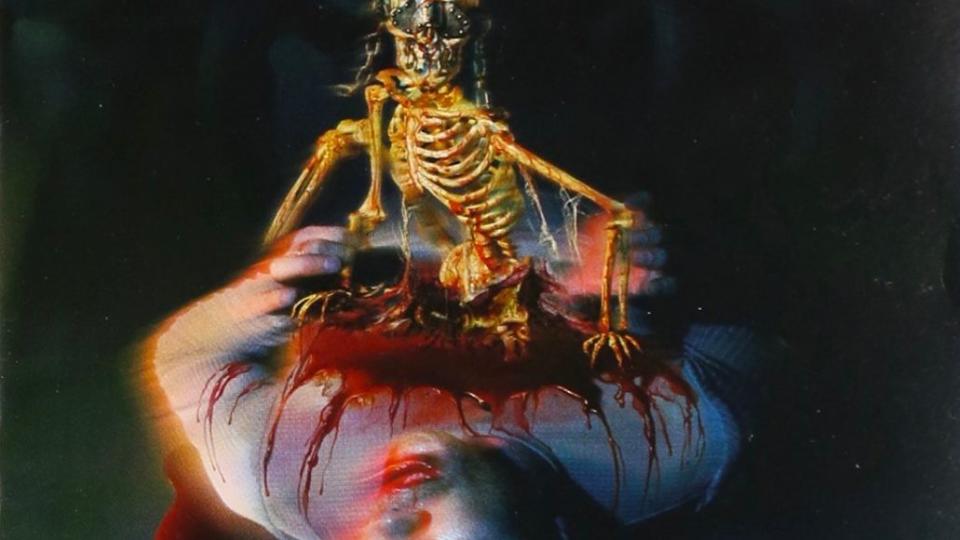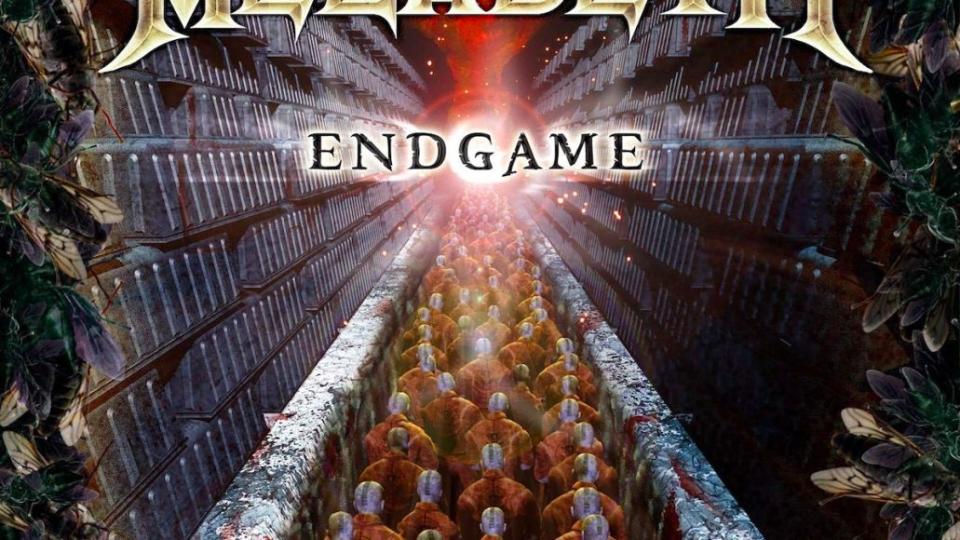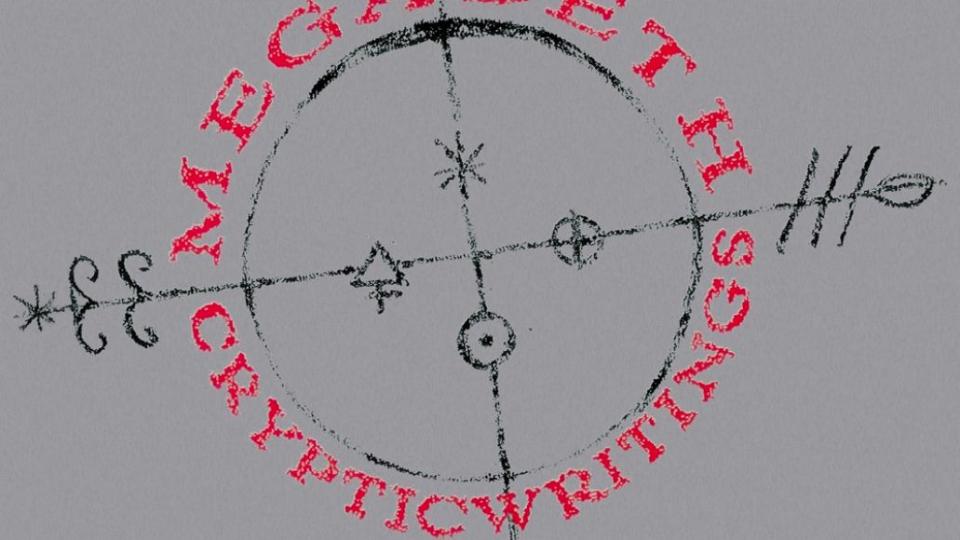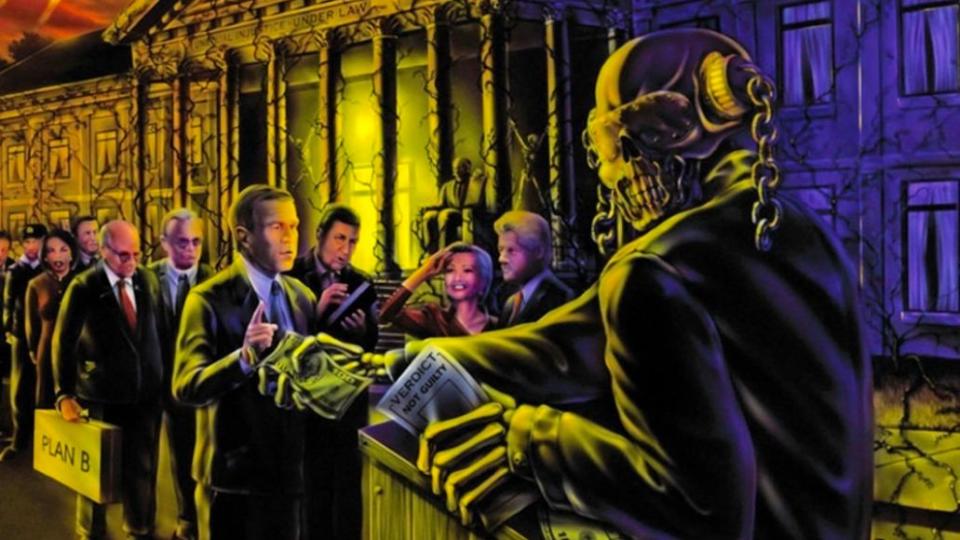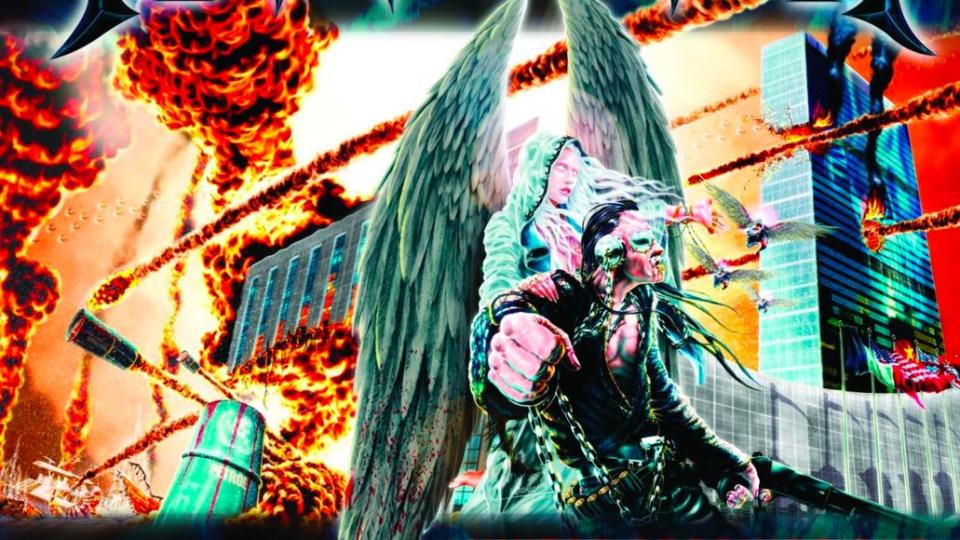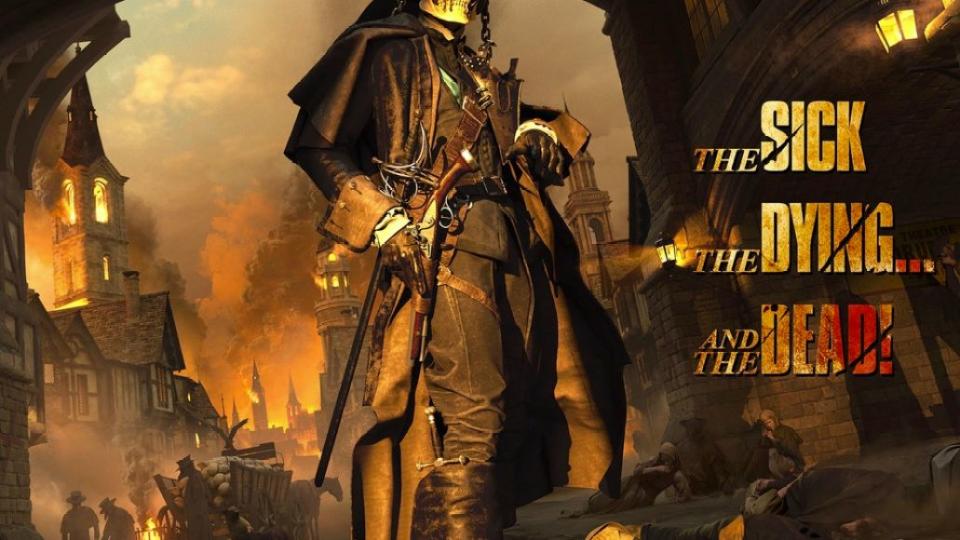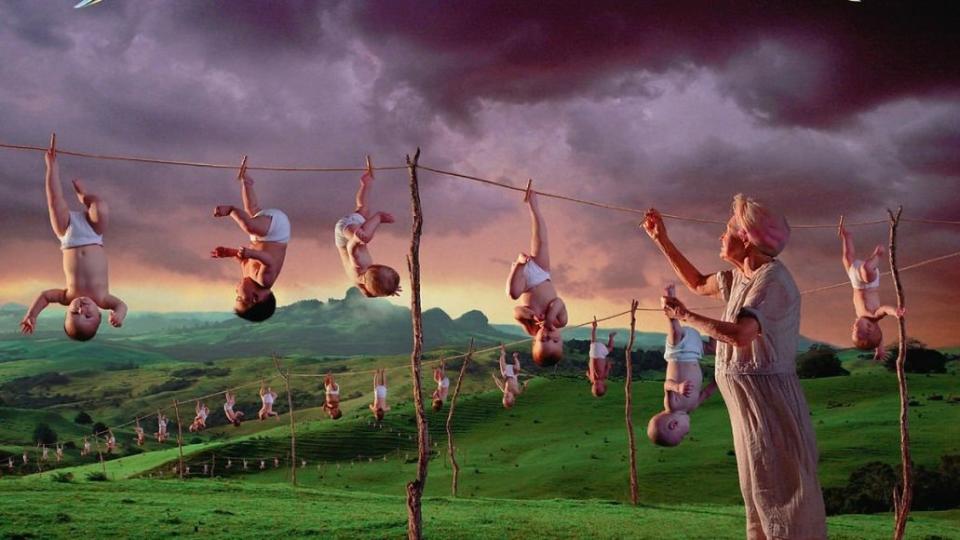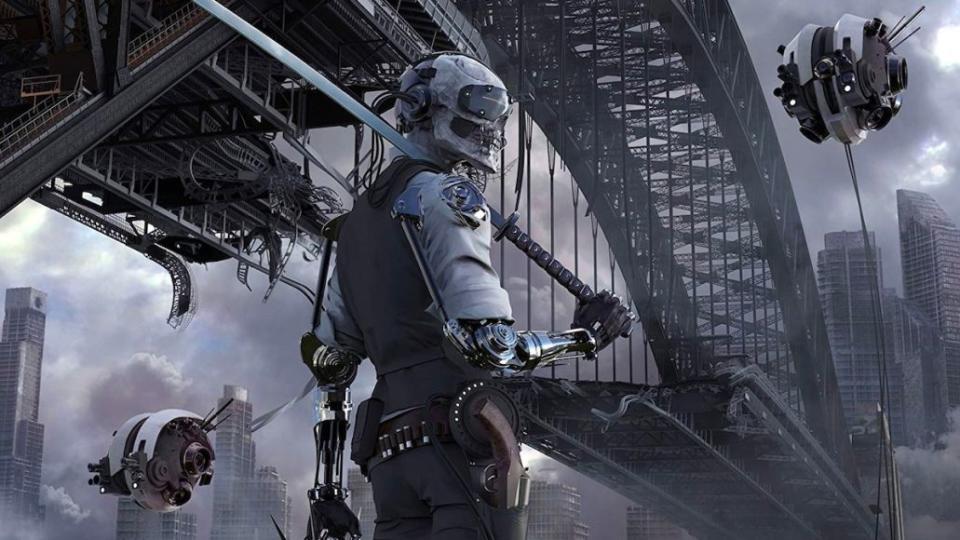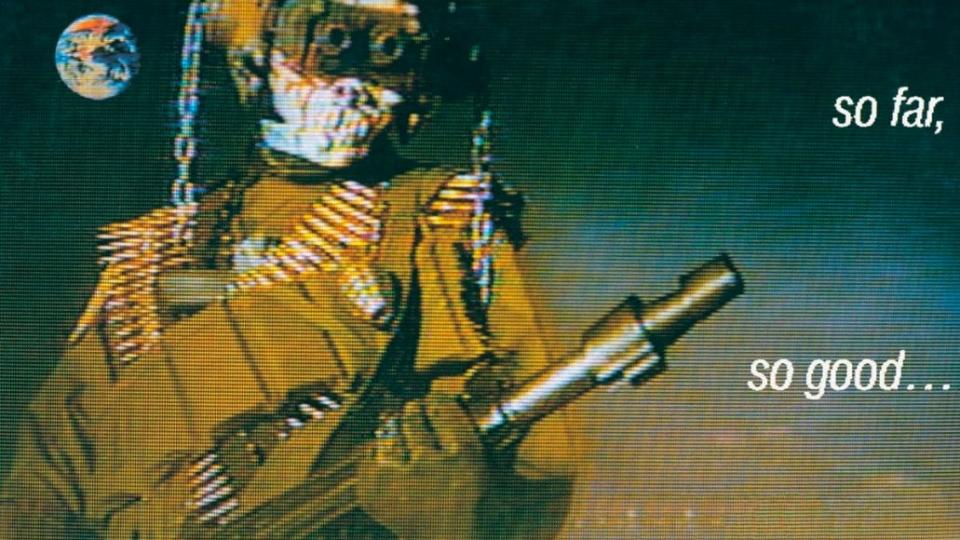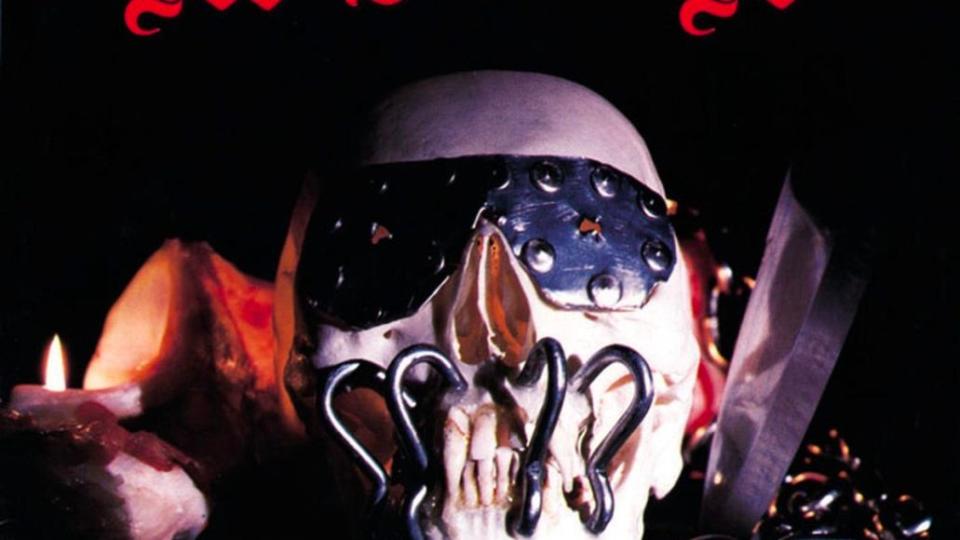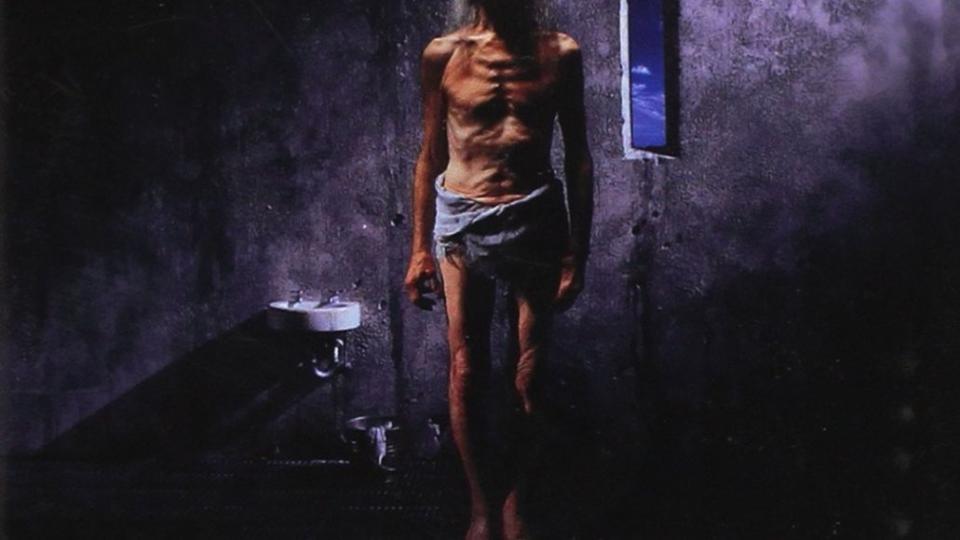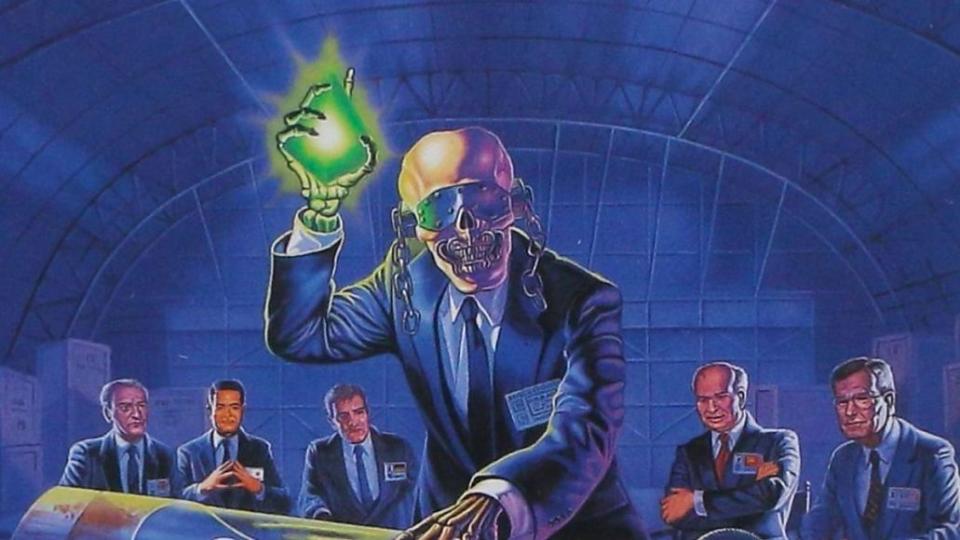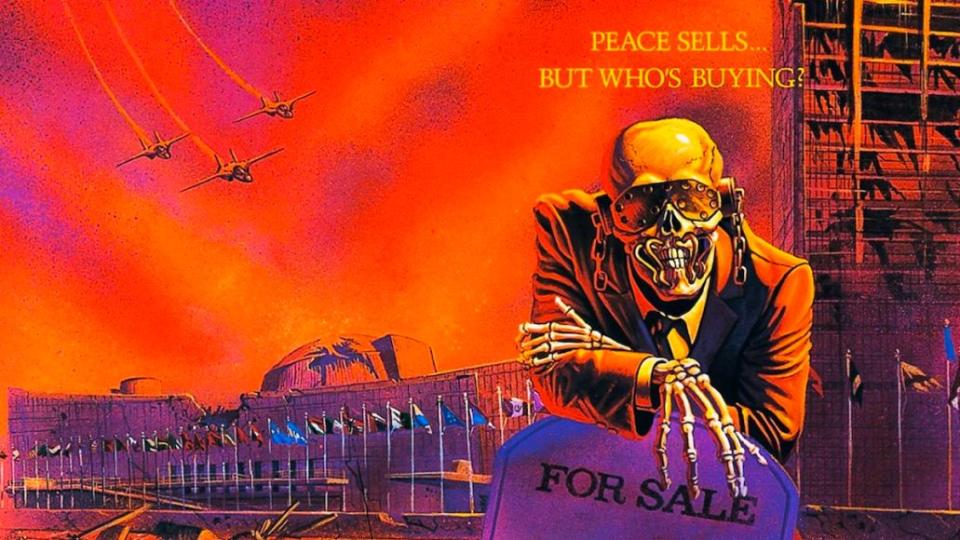Ranking Every Megadeth Album From Worst to Best
- Oops!Something went wrong.Please try again later.
- Oops!Something went wrong.Please try again later.
The post Ranking Every Megadeth Album From Worst to Best appeared first on Consequence.
Welcome to Dissected, where we disassemble a band’s catalog, based on the exact science of personal opinion, late night debates, and the love of music. In this installment, we rank Megadeth’s discography thus far.
The origin of Megadeth is a tale of redemption for its central figure, Dave Mustaine. After being fired from Metallica for his erratic behavior and substance abuse, Mustaine was left to his own devices. He formed Megadeth as his new songwriting outlet, filling out the lineup with choice musicians who could execute his songs and ideas.
Throughout the band’s career, Mustaine has been the central force behind a revolving-door cast of guitarists, drummers, and bassists. He surrounds himself with those who can achieve his vision for the band. As Mustaine goes, Megadeth goes.
From their early years in the mid ’80s playing fiery thrash, the band moved to progressive metal epics with the help of lead shredder Marty Friedman, writing some of the most iconic heavy metal songs of all-time. Never content with stagnating, Mustaine would again shift the band toward a more alternative radio-friendly sound in the late ’90s. The change drew ire from longtime fans who’d grown accustomed to Megadeth’s more extreme speed metal, especially compared to the commercial shift made by the band’s inevitable rivals Metallica. While the trajectory of each band’s career share parallels, Mustaine turned Megadeth into a monolithic heavy metal institution and brand independent of his old band.
In 2019, Mustaine was diagnosed with throat cancer, but after completing treatments, he was back on the road and ready to record new music soon after. This persistence and artistic work ethic defines Megadeth, who’ve released 16 albums over their career, including their most recent effort, 2022’s The Sick, the Dying… and the Dead! While it wasn’t an easy task, Heavy Consequence took on the challenge of ranking the band’s colossal discography, retracing the career of the thrash metal legends. — Jon Hadusek
16. Super Collider (2013)
Symphony of Dissection (Analysis): Super Collider feels like a band that normally has a very strong identity suddenly struggling to find itself. The album starts off promising (although a bit like a Judas Priest album rather than Megadeth) with the blistering intro guitar riff to “Kingmaker”. However, the LP then meanders into a mid-tempo mess of thrash metal tropes played way too slowly, and this happens before “Kingmaker” even ends.
The title track “Supercollider” that comes up next certainly doesn’t help matters with its oddly ’70s rock influenced chorus. Releasing material as long as Megadeth had been by this point, it’s difficult not to repeat yourself or go off in strange directions and many criticized the album as a rehash of their previous material.
It seems like what really upset people was the band’s heading in a commercial direction again as they had done once before in their career. Fans felt they had been promised a heavier direction with Th1rt3en and then faced the same digression as they had in the 1990s with Countdown to Extinction — but with much less promising results.
Holy Worth (Best Song): Although it starts slow and shows a band that is unsure of what direction it is going, with introspective verses, a catchy chorus, and then a randomly heavy thrash ending, “Dance in the Rain” is one of the strongest songs on the album with interesting lyrics and blazing guitar work. It also sounds the most like a Megadeth song with Mustaine’s patented political rants about debt and the working man. It also has some great bass riffs by David Ellefson.
Tornado of Slop (Worst Song): “Beginning of Sorrow” is not a bad song really, if it were released by Disturbed or even In Flames, but not Megadeth. Even the amazing guitar solo work and tight song writing cannot mask the fact that it just doesn’t resonate as one would expects from the band and feels a little like pandering to the masses. The chorus is slow and plodding, albeit catchy. — Colette Claire
15. Risk (1999)
Symphony of Dissection: For years, Risk was considered not only the worst Megadeth album but also the worst album of the Big Four. The reason isn’t just a switch to rock over more overt metal; Metallica’s “Black Album” and Megadeth’s Countdown to Extinction each showed that thrash bands could make that transition and still produce thrilling, essential material. The issue was that the riffs seemed by this point to have wholly disappeared. The essential magic that occurred when Marty Friedman joined the band was seemingly fully exhausted, leaving songs that feel aimless especially when compared to the fiery records at the beginning of this period of the band’s life.
Countdown was a gamble, but each record after was a step down in quality as the band struggled to capture that essential fire that makes great rock and roll work, and by this point it seemed like nothing was left. The band seemingly agreed; following the release of Risk, Friedman quit the band. Years on and none of this material makes live sets any more, nor does it feature in compilations; even the band has seemingly agreed that this is a historical document at best and not representative of the spirit of the band.
Holy Worth: The final two songs of Risk form the “Time” suite that, in direct counter to the general shape of the album before it, is actually a strong offering. The “Time” suite measures up to anything on Countdown to Extinction or Youthanasia and shows the tantalizing promise that a more rock-oriented Megadeth offered. Based on this piece, it’s not hard to see why the band chose to explore this route.
Tornado of Slop: Admittedly, for worst songs, you have your pick of the litter here, but only one song made me audibly groan halfway through. “Breadline” tricks you at first, seeming like it might effloresce into a strong rock tune, before it turns to pop country shlock. From Megadeth. The band that wrote Peace Sells. It boggles the mind. Nearly every aspect of this song fails to click, either with itself or with the general notion of pleasant songcraft. Abysmal. — Langdon Hickman
14. Th1rt3en (2011)
Symphony of Dissection: Mustaine must have come to the conclusion that Megadeth was becoming too watered-down over their past few studio offerings – due to him serving as the sole remaining member left from what many consider the band’s prime years, of 1985-1994. As a result, he buried the hatchet with David Ellefson, and an attempt was made to reunite the Rust in Peace lineup (with guitarist Marty Friedman and drummer Nick Menza). But by the time 2011’s Th1rt3en appeared, Friedman and Menza were nowhere to be heard – Mustaine and Ellefson were joined by guitarist Chris Broderick and drummer Shawn Drover, instead.
Listening back to Th1rt3en today, the tracklist sequence appears off-kilter – some of the strongest tunes don’t appear until midway through (“Never Dead” and “New World Order”), while songs that sound like your typical by-the-numbers numbers…just from the titles alone (“We the People,” which relies on an old Megadeth staple – the spoken word intro – and “Guns, Drugs & Money”) appear earlier.
The same complaint I will place upon Th1rt3en is the same one you can foist upon a few other latter-day Megadeth offerings – song-for-song, it clearly does not match up to their stellar earlier albums (the proof being how many of these songs have come and gone in concert setlists…or were never even included). But at least Th1rt3en proved to be a building block, and also, was the first Megadeth album to feature co-founder Ellefson in a decade (2001’s The World Needs a Hero being his last appearance).
Holy Worth: “Never Dead” doesn’t begin like your average/ordinary Megadeth tune, as it slowly builds for a minute via what sounds like the drumming from a military parade, before cracking you over the coconut with vicious thrash. And all the necessary ingredients for a thrash party are included – rapid fire guitar riffing, shred guitar solo, and even lyrics that are 100-percent pure Mustaine (especially the chorus – “The fire that burns inside, That’s blistering their brains, That makes them sacrifice, That’s driving them insane!”).
Tornado of Slop: While not musically subpar, the title “Guns, Drugs & Money” alone sounds more like something you’d expect from the Miami Vice soundtrack, rather than from a veteran thrash metal act. And as expected from its title, the tune lyrically focuses on what appears to be drug dealing – although set in Mexico (“Guns, drugs, and money under the Mexican sky/ Guns, drugs, and money, pick your poison or you die”). — Greg Prato
13. The World Needs a Hero (2001)
Symphony of Dissection: Megadeth left their label home at Capitol in 2000 following ongoing tensions. They ended up signing with Sanctuary Records for The World Needs a Hero, billed as a return to Megadeth’s thrash roots after the controversial non-metal of Risk. Mustaine would compare the album to a ship changing its course at sea, as the band knocked off the post-grunge dust and got back to riffing.
It’s a gradual transition on Hero. There’s still some moments of overwrought alt-rock (namely “Promises”) and the awkward pop song treatments that began appearing in the band’s music with Countdown to Extinction. But the handful of albums in Megadeth’s discography that openly embrace pop and heavy metal are notable for those moments when Mustaine gets them both right. The combination of styles and Jimmy DeGrasso’s drumming on “Dread and the Fugitive Mind” are particularly notable — Capitol tacked it on the greatest hits compilation they released in place of Hero after Megadeth left.
Following the release of Hero, Megadeth recorded Unplugged in Boston, which was heavy on material from the album. As a final act of their “alternative” era, the acoustic versions of “Promises” and “Trust” are rendered beautifully, as Megadeth perfected their sonic shift before going back to heavy metal full-time. The World Needs a Hero helped bridge that artistic threshold.
Holy Worth: “Dread and the Fugitive Mind” was proof that Megadeth could still churn out a tight metal song. A groove-metal breakdown dates the song to the time, but its played so well its forgivable — and arguably the most overtly metal moment on Hero. Mustaine’s cartoonish sing-talk is in full effect during the verses. It’s a cleaner recording than “Sweating Bullets” or “Peace Sells”, but it recaptures the attitude.
Tornado of Slop: There’s just too much going on with the production on “Promises”, and the track falls flat despite its overarching attempt at grandeur. When Mustaine wails against a wash of strings, it almost sounds like Guns N’ Roses — a vibe ill-suited for Megadeth. The mix is too cluttered and interferes with what could’ve been a strong recording. As the unplugged version indicates, there’s a passionate, harmonious song at its core, but Mustaine threw the kitchen sink at the Hero recording. — Jon Hadusek
12. Endgame (2009)
Symphony of Dissection: Many critics and fans lauded Endgame as a return to form that was their best since Rust in Peace. While this might not be entirely the case, it is a very strong album that combines the melodic elements of Megadeth and the heavier thrash elements very well. It doesn’t feel uneven in either direction. Endgame was also the first album they released with guitarist Chris Broderick, after Glen Drover left in 2008, but was the band’s last album with bassist James LoMenzo.
Clearly, by this point in their career, Megadeth had juggled musicians (as well as record companies) several times. Mustaine had disbanded Megadeth in 2002 due to nerve issues in his arm, and so he had to rebuild it once he recovered in 2004. Despite all this upheaval, Megadeth released some solid material upon their return, and this included Endgame. Songs like “This Day We Fight!” reminded fans and critics of albums like So Far, So Good… So What!
Endgame did fairly well commercially, hitting the Billboard 200 at No. 9, which is solid for a metal band with so many years under their belt. The guitar work on this album is really noteworthy especially the solo on “How the Story Ends”. The song “Head Crusher” is also a notable stand out which was also nominated for “Best Metal Performance” at the 52nd annual Grammy Awards. Not Megadeth’s first nomination, but their first in over ten years.
Holy Worth: “44 Minutes” is an epic opus dedicated to the events of February 28, 1997, when two bank robbers armed to the teeth attempted to take over a Bank of America in North Hollywood, California. Mustaine uses his sometimes overly articulate lyrical skill to describe the event perfectly. This coupled with a memorable chorus and guitar riffs makes this song a standout track on the album.
Tornado of Slop: “Bodies”, with its radio-friendly chorus, leaves something to be be desired. Although its hard to call it radio-friendly given the subject matter. The lyrics read “All the bodies left behind/ May all have been good friends.” Despite a killer solo, the song is a little slower than the rest on the more thrashy album. — Colette Claire
11. Cryptic Writings (1997)
Symphony of Dissection: Megadeth spent much of the ’90s exploring rock over metal, attempting to court radio airplay to try and follow the same trajectory Metallica proved was exceptionally lucrative at the turn of the decade. This was Megadeth’s third stab at more concise and radio-friendly material, following Countdown to Extinction and Youthanasia, and while the law of diminishing returns certainly applies, the wheels are still more or less on the cart on Cryptic Writings.
Kudos to the band as well for largely frontloading the record with their bolder experiments, from the proggy post-punk suite-like opener “Trust” to the blues rock of “Have Cool, Will Travel”; even if not all of the ideas worked, the band committed and didn’t try to bury them mid-record like other groups might have. It is unfortunate then that, with the fullness of time, we saw that it was the worse tendencies here on Cryptic Writings that were expanded upon for the following studio album. It’s hard not to let that knowledge shape the experience of this record. At its best, the rock songs sound almost like Megadeth does ’90s Rush, but the less successful experiments and riffs of the record combined with some cloying and at times corny vocal decisions mar the record.
Holy Worth: The band ends the record with a strong one-two punch, with “Vortex” standing out as the most memorable song. Structurally and melodically, it sounds eerily similar to “Tornado of Souls” from Rust in Peace, and while that might have weakened the track on other records, here it is a strength. Having that kind of rich, complex, prog-lite thrash in the midst of an otherwise fairly direct record felt like a strong reminder of the Megadeth we all love at their best.
Tornado of Slop: “Almost Honest” sounds like the light and carefree hair metal that thrash initially countered. Megadeth dabble with rock timbres elsewhere on the album to good effect but here it feels like a betrayal, with the band undercutting everything that made them compelling and interesting to fans and musicians in the first place. The fact that it’s the second track is especially confusing and nearly sinks the album before it even really starts. — Langdon Hickman
10. The System Has Failed (2004)
Symphony of Dissection: After 2001’s The World Needs a Hero, it appeared as though Megadeth were done. Not only did Mustaine announce he was disbanding the band, but it sounded like it would be permanent, since he accidentally severely injured his hand – which seemingly would prevent him from ever playing guitar again. But through therapy, he was eventually able to miraculously shred once more on his Flying V.
So, for his next project, a solo release was planned… until the record label demanded it be issued under the “Megadeth” banner, due to contractual obligations. Mustaine relented, and as a result, 2004’s The System Has Failed was released as a Megadeth album… despite Mustaine being the sole member left over from The World Needs a Hero. However, long-time Megadeth fans will recognize that the guitarist from the group’s first two classic albums, Chris Poland, provided lead guitar on nearly all of the album’s tracks (rounding out the line-up for the album was bassist Jimmie Lee Sloas and drummer Vinnie Colaiuta – serving as the first-ever Megadeth album to not include David Ellefson).
With all the material penned solely by Mustaine, no songs truly register high on the “Mega-meter” – as far as being a true Megadeth classic, on par with say “Wake Up Dead”, “Holy Wars”, or “Symphony of Destruction.” But that said, “The Scorpion” is an oft-overlooked thrash gem, while a pair of melodic tunes, “Die Dead Enough” and “Of Mice and Men”, sound akin to yer expected latter-day Megadeth fare.
Holy Worth: While “Die Dead Enough” and “Of Mice and Men” were obviously aimed more squarely at radio, “The Scorpion” oozes with attitude – especially when the guitar and vocals combine together for the song’s verse. Also, the tune is one of only three that Mustaine supplies lead guitar for (the other two being “I Know Jack” and “Truth Be Told”) – making it possibly the most truly “Megadeth sounding” tune of the bunch.
Tornado of Slop: The lyrics in “Shadow of Deth” are not sung by Mustaine, but rather, are a spoken word bit over a mere two minutes and fifteen seconds worth of music. All in all, the tune comes off as an obvious “Let’s fill up a few minutes on the album” maneuver, and is one of three tracks that contain spoken word bits (“Blackmail the Universe” and “I Know Jack” being the others), which tends to be same-sounding after a while. — Greg Prato
09. United Abominations (2007)
Symphony of Dissection: By now Megadeth had completed their rebirth as a heavy metal band. The System Has Failed saw the band return to prior form, hinting at Rust in Peace levels of thrash. Still, Mustaine was forced to build another lineup for the follow-up album, United Abominations. The band’s old guitarist Chris Poland had served only as a session musician on System, so Eidilon and King Diamond shredder Glen Drover would step in to fill the vacancy on lead guitar.
Drover and Mustaine work nicely alongside one another on United Abominations. Their layered guitar-work drive a steady selection of metal songs that aim to be even heavier than the previous record. A digital sheen indicative of 2007 hamper some of the guitar tones, but the performances stand up well and have a kinetic thrill that was lacking with the piecemeal lineup on The System Has Failed.
The lineup for United Abominations toured together prior to recording the album, and it shows. Megadeth simply couldn’t pull off a “Sleepwalker” in the Risk era, but they’d been hinting at a full-blown metal revival for a few years. The “live” energy of this lineup got them there, overcoming the synthetic production aesthetics that also affect Megadeth’s next three albums.
Holy Worth: In Megadeth’s discography, “Sleepwalker” is slept on. The album’s ferocious lead track is surely enough to perk the ears of the cold-hearted thrashers that gave up on Megadeth after Risk. Drover’s background with King Diamond comes through, as the songs has a soaring build and tinges of minor melodies in the chorus. It’s no-frills speed metal, and Mustaine sounds comfy on the cacophonous opener.
Tornado of Slop: With the emphasis on a heavier, more riff-centric approach, there’s far less memorable melodies and hooks throughout United Abominations. Some tracks don’t have anything memorable to cling to, exemplified by the formulaic “Play for Blood”. Despite the controversy of Megadeth’s softer songs, they showcased Mustaine’s maturity as a vocalist and melody writer. It’s an inherent trade off, with the band further deviating from those overly pop inclinations on this album. — Jon Hadusek
08. The Sick, the Dying… and the Dead! (2022)
Symphony of Dissection: Megadeth’s 16th studio album finally arrived in September 2022 after many trials and tribulations, starting with frontman Dave Mustaine being diagnosed with throat cancer back in 2019. Progress on the album was halted as he underwent treatment, and Mustaine would reveal that he was 100-percent cancer free in February 2020.
Then the global pandemic happened, once again shelving the project. And then longtime bassist David Ellefson was ousted from the band after a compromising online sexual encounter went public. Mustaine would replace Ellefson’s bass parts on the album, with Testament’s Steve DiGiorgio re-recording the studio tracks. Former Megadeth bassist James LoMenzo was eventually recruited to join the band’s touring lineup and was later named a permanent member.
However arduous the journey, the morbidly titled The Sick, the Dying… and the Dead! stands as a fine example of latter-era Megadeth, retaining the polished sound and tight performances found on 2016’s Dystopia. It isn’t the most diverse set of songs Mustaine and company have ever penned, but the plethora of memorable riffs peppered throughout the album more than compensates for the pummeling repetition. Mustaine’s lyrics are also among his most pointed and purposeful, reflecting the many events that surrounded the creative process from 2019 onward.
Holy Worth: “Dogs of Chernobyl” is loosely based on the abandonment of animals following the Chernobyl nuclear metldown in 1986. The lyrics were actually co-written by Mustaine and his oncologist, Dr. Anthony J. Cmelak, who had performed the treatment on Mustaine that helped him beat cancer. Being an expert on radiation, Dr. Cmelak provided the gory descriptions of the effects of deadly radiation exposure found in the lyrical passages: “Nausea overwhelms my brain, distance is the goal / Stomach spasms, leaking gut, I have lost all control / Saliva gurgling, I’m retching, till I overwhelm the bowl.” Appropriately brutal content for one of the album’s more dynamic and memorable songs.
Tornado of Slop: While it’s not a technically inferior song, lead single “We’ll Be Back” recycles too many Megadeth tropes to stand out as original. The vocal pattern is eerily similar to “Good Mourning/Black Friday” from Peace Sells and the overtly violent war-themed lyrics are a safe par for Mustaine. It’s got a good riff, but the rest is a bit too predictable. — Jon Hadusek
07. Youthanasia (1994)
Symphony of Dissection: With the success of Countdown to Extinction, expectations were high for Youthanasia — and fans were not disappointed. Youthanasia was almost the continuation of Countdown to Extinction and followed in the same radio-friendly but still heavy direction. What was most refreshing is that Megadeth was undeterred by the onset of grunge and kept doing what they did best, which by this point was a mix of hard rock and metal sometimes dubbed “thrash n’ roll.”
Yes, Megadeth continued to experiment with more commercial melodies, but they were one of the rare exceptions among their peers who didn’t attempt to acquiesce to the new sound from Seattle. As hard hitting as it is emotional and melodic, songs like the heavy but accessible “Train of Consequences”, the crunchy “I Thought I Knew It All”, the engaging “Reckoning Day”, and the cleaver “Victory” (where Mustaine works a bunch of past Megadeth song titles into the lyrics) showed that Youthanasia was the logical progression of the band’s sound.
Again produced by Max Norman and featuring the same lineup as Countdown to Extinction, Youthanasia peaked at No. 4 on the Billboard 200 chart, and was certified platinum. And, despite its slower and more accessible qualities, the album still features thrashy elements that had become synonymous with Megadeth since Peace Sells… But Who’s Buying, including heavy bass lines, palm-muted guitar chugging, blistering guitar solos, and booming beats.
Holy Worth: “A Tout le Monde,” (which is French for “To all the world”) is as beautiful as it is heavy. This song will always prompt a room full of metalheads to sing along with their lighters in the air. The songwriting and guitar work on this track is stellar, especially the solo. The song is about death and saying goodbye, but Mustaine claims it is not about suicide as it was mistakenly labeled. This caused quite a controversy upon its release, and what is metal without controversy?
Tornado of Slop: Though “Elysian Fields” has some interesting subject matter (the Elysian Fields are an ancient Greek conception of the afterlife), this song is mediocre at best. It is a bit slow and plodding and fails to find its footing among so many other stronger songs like the title track or “Addicted to Chaos”, making “Elysian Fields” feel a bit like filler. The “ahhhs” of the backing vocals also throw the track off. — Colette Claire
06. Dystopia (2016)
Symphony of Dissection: The exit of Chris Broderick and Shawn Drover, plus the blowback from 2013’s Super Collider, made Megadeth’s future feel uncertain at best. Combine this with the increasing scrutiny over Mustaine’s personal politics, a topic he’s never shied away from, and the outlook for 2016’s Dystopia was dim.
It turns out these anxieties were for naught; armed with Angra’s Kiko Loureiro and Lamb of God’s Chris Adler, the two Daves put out one of the best albums of their career. Dystopia takes clues from the machine precision of the parent bands of the two new players, giving Megadeth the modern flair they’d struggled to incorporate for several albums prior. It would be improper to refer to the Broderick years as a failed experiment, given that it did produce some strong material, but it’s hard to view Dystopia as anything but an improved second pass on that modern metal concept.
Holy Worth: The clean guitars and ride bell groove make the title track “Dystopia” feel almost like peak era Queensryche, something no one expected Megadeth to pull out of their bag of tricks. There’s also more than a handful of “Hangar 18” in the riffs and structure while the solos approach power metal. Combine this with the gruffness and grit of Mustaine’s modern vocals and you have a song that can comfortably go toe-to-toe with the band’s best. In fact, it won Megadeth their first-ever Grammy.
Tornado of Slop: Dystopia largely keeps things vaguely post-apocalyptic, leaving the political specifics to be filled in by the listener’s imagination even if we can fairly accurately guess how Mustaine meant things personally. But on “Post American World”, that veil is dropped, and worse it is married to a track where Mustaine seems to be struggling to keep up with the music around him, resulting in a nearly narrated screed that disrupts any otherwise strong return. — Langdon Hickman
05. So Far, So Good… So What! (1988)
Symphony of Dissection: Megadeth’s previous album, Peace Sells…But Who’s Buying?, avoided the dreaded sophomore slump. So, it should have been smooth sailing from album #3 onward, right? Wrong. Substance abuse had run rampant behind the scenes within the Megadeth ranks – leading to the ousting of guitarist Chris Poland and drummer Gar Samuelson. In their place would be Musicians Institute grad Jeff Young on the six-string, and former Megadeth drum tech Chuck Behler behind the kit.
Due to the struggles of Mustaine and Ellefson and the lineup upheaval, it appeared as though Megadeth was trying to scrape together enough material for a full-length album, offering the under-35-minutes long So Far, So Good…So What! (for those keeping score at home, the third Megadeth album in a row to feature an ellipses in its title). Sporting a downright silly album cover image of their mascot, Vic Rattlehead, in combat gear (looking akin to something you could have grabbed off the shelves of Toys R Us), the Mega-men had to resort once again to dipping into the cover well to help elongate an album.
And this time, they came up with the Sex Pistols’ “Anarchy in the UK.” And despite the aforementioned obstacles, there was enough worthwhile originals to keep the Megadeth machine chugging along – “Set the World Afire,” “502” (a tune about drunk driving), “In My Darkest Hour” (inspired by the death of Metallica’s Cliff Burton), and “Hook in Mouth” (which deals with censorship/the PMRC).
Holy Worth: The tragic death of Mustaine’s former bandmate in Metallica, bassist Cliff Burton (on September 27, 1986… just eight days after the release of Peace Sells), certainly affected him – to the point that it served as the inspiration for the moody thrasher “In My Darkest Hour.” Although (shockingly!) mid-paced for most of the song’s 6:27 duration, it eventually does detour into full-on thrash fury three-quarters of the way through, before slowing things down once again in time for the tune’s finale.
Tornado of Slop: There are certain “holy grail” songs that it’s pretty much a forgone conclusion that you should not attempt to cover. And I would declare the Sex Pistols’ pissed-off anthem that railed against the late ‘70s British establishment, “Anarchy in the UK,” as being one of them. Megadeth’s rendition changes the lyrics from “UK” to “USA,” but doesn’t add anything nor improves on the perfect original. And to add insult to injury, this was the only tune off of So Far, So Good…So What! that featured an MTV-aired video. — Greg Prato
04. Killing Is My Business… and Business Is Good (1985)
Symphony of Dissection: Megadeth’s bloodthirsty debut, Killing Is My Business… and Business Is Good, is a document of thrash metal at its fastest and most unhinged. Fueled by Dave Mustaine’s frustrations after being ousted from Metallica, the guitarist proved that he could get by just fine on his own. Megadeth’s ragtag early lineup would stick together throughout the next album, growing exponentially tighter over that span. Here, they’re wild and raw. The low-budget production gives the album a homespun charm, free of the flourishes and hi-fi shine of latter Megadeth albums. It’s pure unadulterated thrashing speed metal.
The album is notable for including Mustaine’s composition “Mechanix”, which he wrote as a member of Metallica (who recorded it as “The Four Horsemen”). Megadeth’s song is far faster and more punk-influenced than Metallica’s now classic track. It stands as a testament to what Mustaine represented at the time. He was too fast, too unpredictable, and too erratic for Metallica. This is symbolically represented in “Mechanix” — a far more chaotic creation than Metallica’s take on the song. Mustaine and Megadeth would clean up their production on future albums, but Killing Is My Business captured the youthful messiness and extreme riffing of early Bay Area thrash. These qualities would diminish as Megadeth introduced more diverse styles of heavy metal into their sound.
Holy Worth: One of the definitive early Megadeth songs, the two-part “Last Rites / Loved to Death” opens with Bach’s Toccata and Fugue in D minor before relentlessly ripping. The rapid speed and vitriol were the selling points of Megadeth’s brand of thrash metal. It’s brazenly affronting to the commercial music and glam metal of 1985, combining the fast tempos of hardcore punk with harsher tones and evil imagery. They never got more uncompromising than this.
Tornado of Slop: Despite being one the crowning compositions of Mustaine’s early years, “Mechanix” is the only song on Killing Is My Business that doesn’t benefit from the raw sound of the recording. A slower tempo and more dynamics would’ve helped. Metallica figured this out, but Mustaine stuck with his blistering rendition. It’s messy by comparison and doesn’t do justice to the song itself. Megadeth would master these production subtleties on future albums. — Jon Hadusek
03. Countdown to Extinction (1992)
Symphony of Dissection: Taking a broader approach to the genre of thrash metal, the band’s fifth studio album, Countdown to Extinction, was their biggest commercial success. It features songs that are now Megadeth classics like the epic title track, the ode to insanity “Sweating Bullets”, and the intense “Skin O’ My Teeth”. It debuted on the Billboard 200 at No. 2 and has been certified double platinum.
After the precision thrash metal of their previous albums, the more radio-friendly nature of Countdown to Extinction caused some die-hard fans to cry of “sell out”, but the fact remains that it’s a damn good album. In his 2010 autobiography, Mustaine called Countdown “a turning point” for Megadeth and said that he “knew we had a record that could alter the landscape of heavy metal.” It is true that they added more melody and slowed things down a bit from the speed/thrash metal they were known for playing. The band went in a chunkier, groovier and more approachable direction, but the creepy intros, minor-key rhythms, and soundbites help round out the new era of Megadeth.
The album featured Megadeth’s “classic” 1990s lineup of Mustaine, Ellefson, guitarist Marty Friedman and drummer Nick Menza. Mustaine, Friedman, and producer Max Norman also brought their perfectionism to the table while crafting the LP, making it as technical as it is catchy. The lyrics on Countdown to Extinction also proved that Megadeth was a little more intellectual than some of their thrash counterparts with songs like dark and relentless “Foreclosure of a Dream,” which was inspired by the foreclosure Ellefson parent’s family farm and addressed Reagan-era economics in its lyrics.
Holy Worth: “Symphony of Destruction” is definitely one of the most memorable tracks as it was also a huge single. However, it was difficult to decide on a best song on this album as every track stands out. “Symphony of Destruction”, though, is heavy, chugging and iconic. The verse riff is so iconic that it is one of those riffs you hear when people are testing out guitars at Guitar Center. The chorus is melodic and memorable but still dark and heavy. The lyrics speak to the overall themes of the entire album of loss and betrayal on a political level.
Tornado of Slop: “This Was My Life” is probably the least attention-grabbing song on this album. Although it is just as difficult to pick a worst song on this album as it is to pick a best one, if one has to choose, it would be “This Was My Life.” This is simply because it is not as heavy and brooding as the rest of the album and stands out as a low point for this reason. It is more reminiscent of what was to come on Youthanasia. — Colette Claire
02. Rust In Peace (1990)
Symphony of Dissection: Despite having a hand in some of their absolute greatest works, Mustaine found a difficult time equalling Metallica in the years that followed. Rust In Peace is one of the few exceptions, an album that comfortable sits next to Ride the Lightning and Master of Puppets as one of the best heavy metal albums of all time.
The debut of drummer Nick Mensa and guitarist Marty Friedman have a lot to do with that; these songs existed in demo form with the previous lineup of the group, but the finished pieces have a consummate and powerful oomph to them that feels designed not only to break through but to cement the group’s position as one of the greatest thrash bands. The album flows in tri-part structure, having a loose set of three trilogies of songs. It opens and closes with the prog-touches multi-part suites of “Holy Wars… The Punishment Due” and “Rust In Peace… Polaris”, songs that blended the intensity and complexity of Peace Sells, but with an added approachability and transparency to the playing and mix.
This slight turn toward the approachable would later consume a great deal of the group’s ’90s material, but here the balance is perfect, offering up the mind-melting technical thrash of their earlier work in a format that can be appreciated by prog and general metal/rock listeners.
Holy Worth: There’s no wrong call here in all honesty, but Megadeth has always been great at making the opening track be the thesis statement for the album as a whole. It is no different here with “Holy Wars… The Punishment Due”. Between the virtuosic playing, keen solos, prog levels of sophistication in arrangement and hooky, heavy riffs, “Holy Wars” primes you for one hell of an album.
Tornado of Slop: More of an interlude and atmosphere piece than a proper song, “Dawn Patrol” acts as the post-apocalyptic mood setter for the nuclear war anxieties of “Rust In Peace”, for which it does its job well, but beyond that function it’s far and away the weakest link of an otherwise stellar set. — Langdon Hickman
01. Peace Sells… But Who’s Buying? (1986)
Symphony of Dissection: Over a one-year period beginning in March 1986, the Big 4 of thrash just all happened to issue the best albums of their entire careers. Of course, we’re talking about Metallica’s Master of Puppets, Slayer’s Reign in Blood, Anthrax’s Among the Living, and Megadeth’s Peace Sells…But Who’s Buying? As hinted at by Killing Is My Business, Megadeth were probably the most technical – and certainly, busiest-sounding – of the four acts. And it’s not because their members had a prog background, but rather, guitarist Chris Poland and drummer Gar Samuelson were fusion-heads. And it all coalesced with Peace Sells.
Easily one of the band’s most consistent albums from beginning to end, it includes two of their very best-known tracks to this day, the title track and “Wake Up Dead”, which also resulted in Megadeth being the first thrash band to be embraced/supported by MTV. And the mayhem didn’t stop there – such tracks as “The Conjuring”, “Devil’s Island”, “Black Friday”, and “Bad Omen” were all standouts, featuring tight riffs, shredding leads, and fast tempos.
Overall, Peace Sells was the sound of a mean, lean, and focused Megadeth (a phrase utilized on a poster at the time, “The World’s State-of-the-Art Speed Metal Band,” didn’t lie). Unfortunately, Poland and Samuelson would exit the band after the album’s tour, while Mustaine and Ellefson’s substance abuse issues would further hamper the group – signaling the end to what many consider Megadeth’s best lineup. ‘Tis a shame, as Peace Sells…But Who’s Buying? remains one of the greatest metal recordings of all-time.
Holy Worth: “Peace Sells” begins with one of the most recognizable and badass bass licks in the history of rock n’ roll. And at a point when the lyrics offered by many mainstream metal bands were by and large, well, dopey, Megadeth were merging social commentary with metal. And the fact that “Peace Sells” has probably been included in every single bloody Megadeth concert since its release only confirms why this tune is tops.
Tornado of Slop: It’s not so much that “I Ain’t Superstitious” is a bad song … it’s just an unnecessary one. For starters, it was not an original composition, but rather a cover of a track by bluesman Willie Dixon, which was first introduced to a rock crowd when the Jeff Beck Group covered it on their debut, Truth. But really the reason why this tune gets the thumbs down is because there was at least one more Megadeth original raring to go that was shelved until the next album, “Set the World Afire” (originally titled “Megadeath” – yes, spelt “d-e-a-t-h” – and was the first tune Mustaine ever composed for the band). — Greg Prato
Pick up tickets to Megadeth’s upcoming tour dates via Ticketmaster, and watch our interview with Dave Mustaine below.
Ranking Every Megadeth Album From Worst to Best
Jon Hadusek, Colette Claire, Langdon Hickman and Greg Prato
Popular Posts
